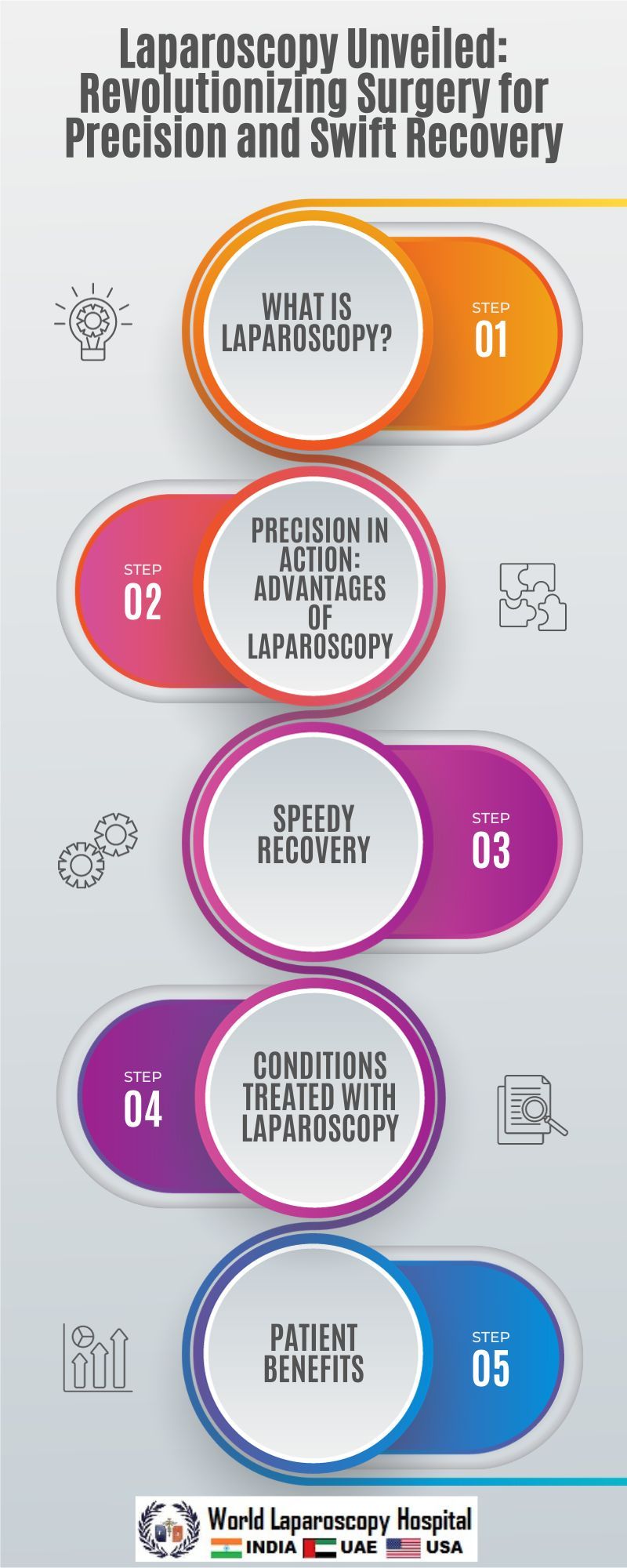Laparoscopy: A Giant Leap in Surgical Precision and Recovery
Introduction:
In the realm of medical innovation, laparoscopy stands as a monumental leap forward, transforming the landscape of surgery. This minimally invasive technique has not only revolutionized the precision of surgical procedures but has also significantly enhanced the recovery process for patients. As we delve into the intricate world of laparoscopy, we discover the origins, advancements, and the profound impact it has had on the field of medicine.

Origins of Laparoscopy:
The roots of laparoscopy can be traced back to the early 20th century, with its humble beginnings in gynecological procedures. The first successful laparoscopic procedure was performed by Georg Kelling in 1901, using a cystoscope to examine the abdominal cavity. However, it wasn't until the 1970s that laparoscopy gained momentum as a surgical technique.
Advancements in Technology:
The evolution of laparoscopy is intricately linked to technological advancements. The development of fiber optics in the mid-20th century played a pivotal role, enabling the creation of slender, flexible instruments for internal exploration. The introduction of video cameras in the 1980s further refined the procedure, allowing surgeons to visualize the operating field in real-time on monitors.
The laparoscopic revolution was propelled by continuous innovations in instrumentation, including trocars for creating access ports, insufflators for maintaining the abdominal cavity's pressure, and specialized tools for precise manipulation. Robotics also entered the scene, adding an extra layer of precision to laparoscopic procedures.
Key Advantages of Laparoscopy:
Minimally Invasive Nature:
Laparoscopy's hallmark is its minimally invasive approach, replacing large incisions with small keyhole openings. This significantly reduces trauma to the body, leading to decreased pain, less scarring, and a faster recovery.
Enhanced Precision:
The magnified, high-definition visuals provided by laparoscopic cameras empower surgeons with unparalleled precision. This is particularly advantageous in delicate procedures where precision is paramount.
Quicker Recovery:
Patients undergoing laparoscopic surgery experience shorter hospital stays and faster recovery times compared to traditional open surgery. Reduced postoperative pain and a lower risk of complications contribute to this accelerated healing process.
Reduced Blood Loss:
The meticulous control afforded by laparoscopic instruments translates into minimized blood loss during surgery. This is a critical factor, especially in procedures where excessive bleeding can pose significant risks.
Lower Infection Rates:
With smaller incisions and a minimized exposure of internal organs to external contaminants, laparoscopy lowers the risk of postoperative infections, contributing to improved overall patient outcomes.
Applications Across Specialties:
While laparoscopy originated in gynecology, its applications have expanded across various medical specialties. In general surgery, procedures such as appendectomies, cholecystectomies (gallbladder removal), and hernia repairs are commonly performed laparoscopically. In urology, it is employed for prostate surgeries and kidney procedures. Orthopedic surgeons use it for joint surgeries, and even in cardiac surgery, certain procedures are now conducted using minimally invasive techniques.
Challenges and Limitations:
Despite its numerous advantages, laparoscopy is not without challenges. The initial learning curve for surgeons transitioning from open to laparoscopic techniques can be steep. The dexterity required to manipulate instruments in a confined space demands practice and skill. Additionally, not all procedures are conducive to laparoscopy, and in some cases, open surgery remains the preferred approach.
The cost of laparoscopic equipment and the need for specialized training can also pose challenges, particularly in resource-limited settings. However, as technology advances and training programs become more widespread, these barriers are gradually diminishing.
The Future of Laparoscopy:
As we peer into the future of laparoscopy, several exciting developments promise to further enhance its capabilities. Artificial intelligence is poised to play a significant role, aiding surgeons in decision-making and even automating certain aspects of the surgical process. Augmented reality, allowing surgeons to overlay digital information on their field of view, holds promise for even greater precision.
The continued integration of robotics into laparoscopic procedures will likely redefine the boundaries of what is surgically achievable. Remote surgery, facilitated by advanced robotics and high-speed internet connections, could bring specialized surgical expertise to remote or underserved areas.
Furthermore, the development of new materials for laparoscopic instruments may lead to even smaller incisions and reduced tissue trauma. This, coupled with improvements in imaging technology, could make previously inaccessible areas of the body more reachable with minimally invasive techniques.
Conclusion:
Laparoscopy stands as a testament to human ingenuity and our relentless pursuit of refining medical practices. From its modest beginnings to its current status as a cornerstone of modern surgery, laparoscopy has transformed the patient experience and elevated surgical precision to unprecedented levels.
As technology continues to advance, the future holds the promise of even more sophisticated and precise laparoscopic procedures. The ongoing collaboration between surgeons, engineers, and researchers ensures that the benefits of laparoscopy will continue to ripple through the field of medicine, offering patients safer, less invasive, and more effective treatment options. In the grand tapestry of medical progress, laparoscopy emerges as a shining thread, weaving together innovation, precision, and compassion for the well-being of those under the surgeon's care.


